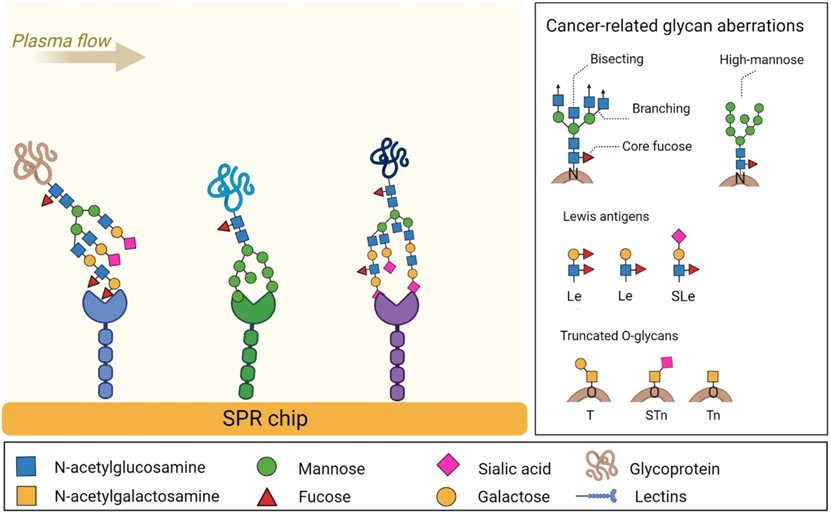Different Patterns of Glycosylation
In recent years, the research of glycosylation mode has attracted more and more attention. The glycosylation patterns in different cells are various, so the altered glycosylation patterns in cell surface glycoproteins can be applied for the diagnosis and treatment of some diseases. Creative Biolabs is a leading service provider in glycosylation patterns analysis. We provide multiple detection methods that are applicable for a variety of research purposes.
Glycosylation, as a post-translational modification of great significance to cell life activities, has aroused great interest. It is well known that the main glycosylation has two forms, N-linked glycans, and O-linked glycans. Generally speaking, all proteins entering the secretory pathway in a specific cell can use the same glycosylation mechanism, but most glycoproteins have a characteristic glycosylation pattern.
Different Patterns of Glycosylation
-
Differential glycan compositions
The detection of glycan compositions is the most basic method in glycan analysis. The glycans on the surface of different tissues have a characteristic glycan composition, and the content of different glycans is dissimilar. This difference is more obvious in tumor tissues and normal tissues. Compared with normal tissues, the levels of several glycans in cancer tissues are reduced, while the levels of other glycans are increased.
-
Differential glycan structures
Extensive studies have found that the related glycoproteins of normal tissues and cancer tissues are significantly different. All differences are caused by changes in glycosylation patterns, which not only lead to the emergence of new carbohydrate epitopes but also the revealing and revelation of epitopes in core proteins. In addition, it should be noted that the same glycoprotein may be glycosylated in various ways by different normal tissues. For example, some glycoproteins expressed in the normal colon appear to have longer side chains compared with normal breast cells.
-
Expression of glycosylation-related genes
Glycans are the products of glycosyltransferases. The type of glycosyltransferase is also closely related to the different glycan patterns. In biochemical research, gene expression profiling and glycomic analysis are often used to evaluate the relationship.
Detection Methods
Protein glycosylation is one of the main post-translational modifications, and a better understanding of glycan patterns is of positive significance for disease diagnosis. Several common techniques used to assess glycosylation patterns in different tissues include mass spectrometry (MS), flow cytometry, and lectin microarray.
 Fig.1 Lectin arrays for detecting glycans in plasma.1
Fig.1 Lectin arrays for detecting glycans in plasma.1
As one of the leading biotechnology companies, Creative Biolabs is dedicated to providing high-quality and professional services for detecting different patterns of glycosylation. If you are interested in our services, please feel free to contact us.
Reference
-
Chrastinová, Leona, et al. "Linking aberrant glycosylation of plasma glycoproteins with progression of myelodysplastic syndromes: a study based on plasmonic biosensor and lectin array." Scientific reports 13.1 (2023): 12816. Distributed under Open Access license CC BY 4.0, without modification.
For Research Use Only.
Resources

 Fig.1 Lectin arrays for detecting glycans in plasma.1
Fig.1 Lectin arrays for detecting glycans in plasma.1



